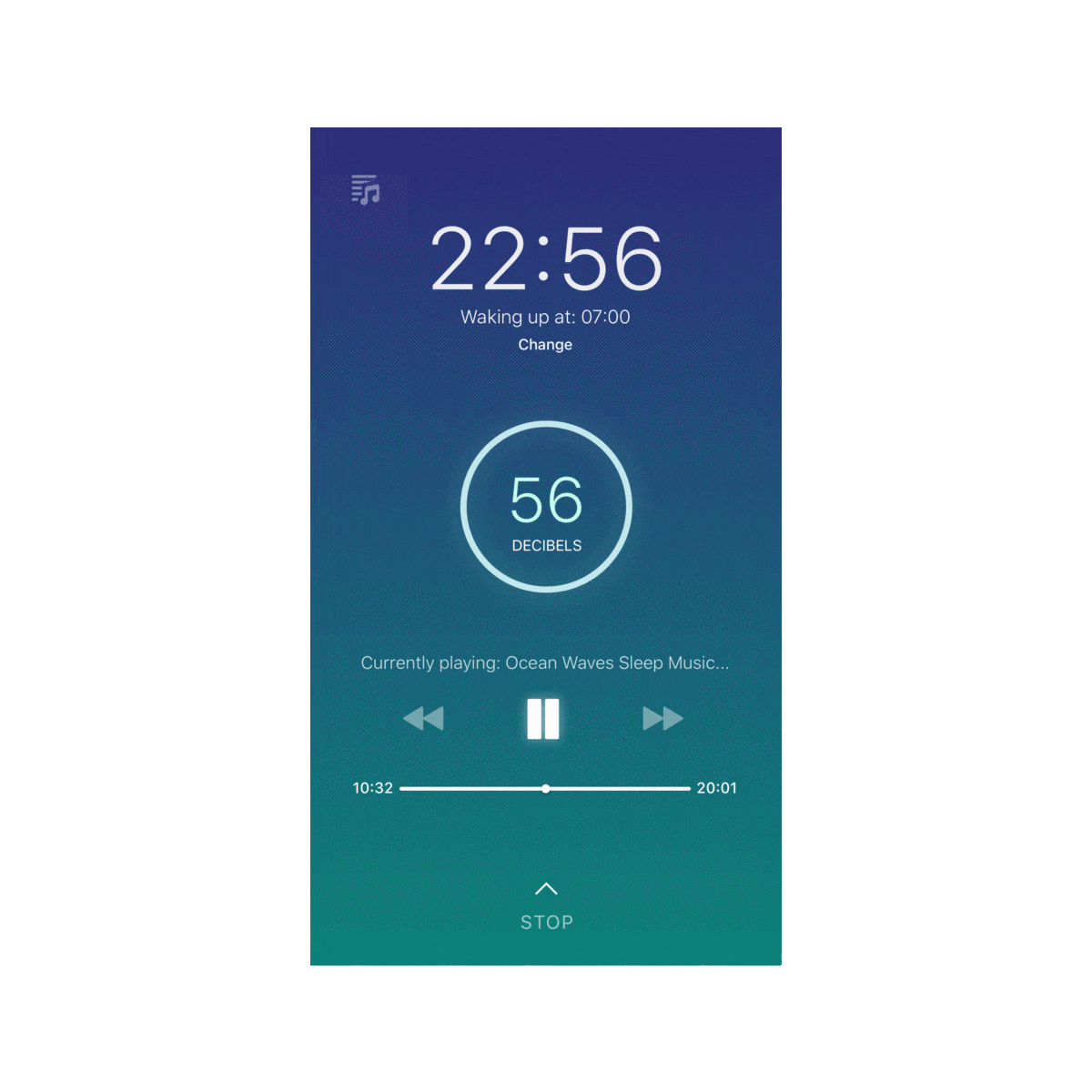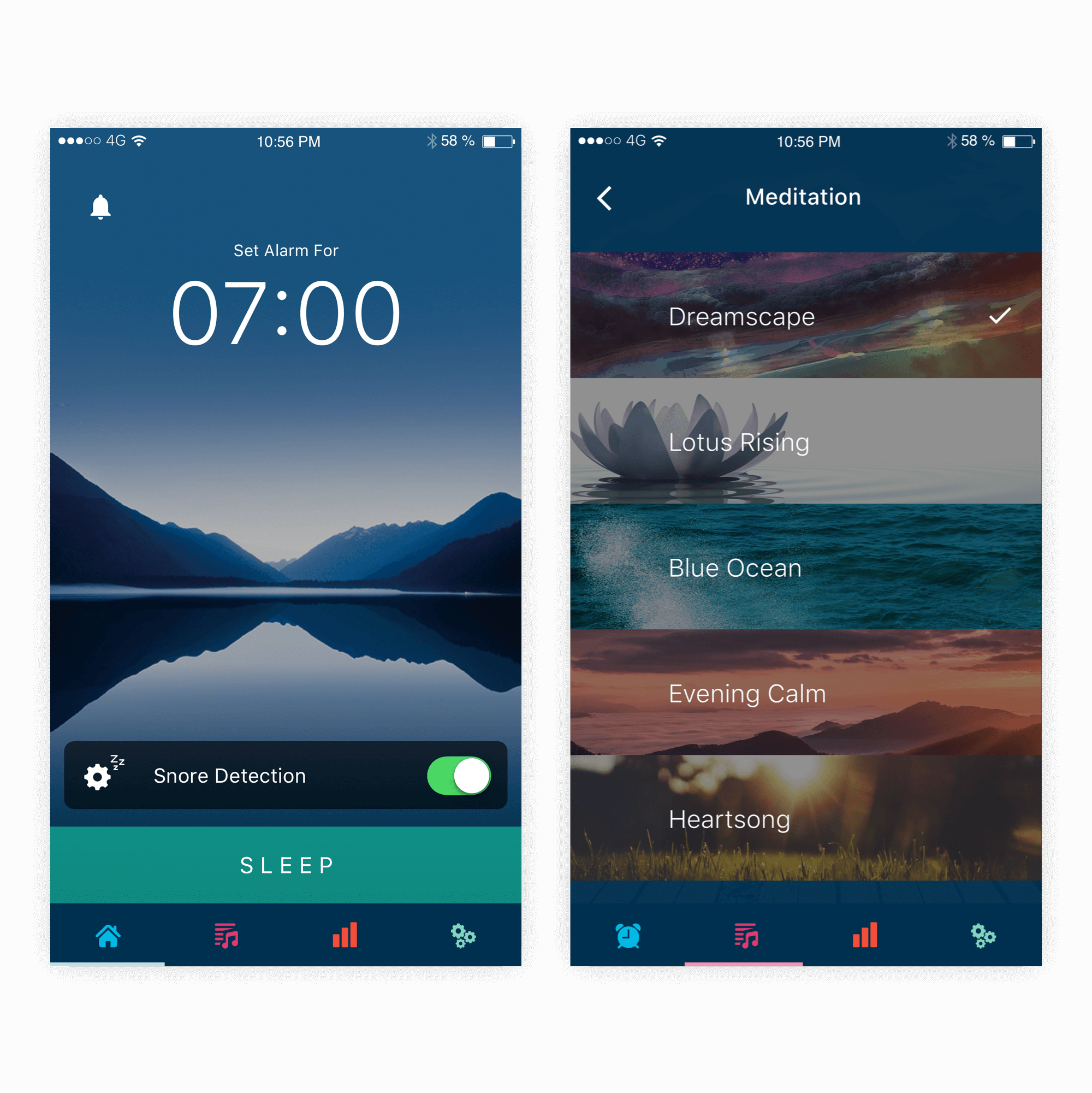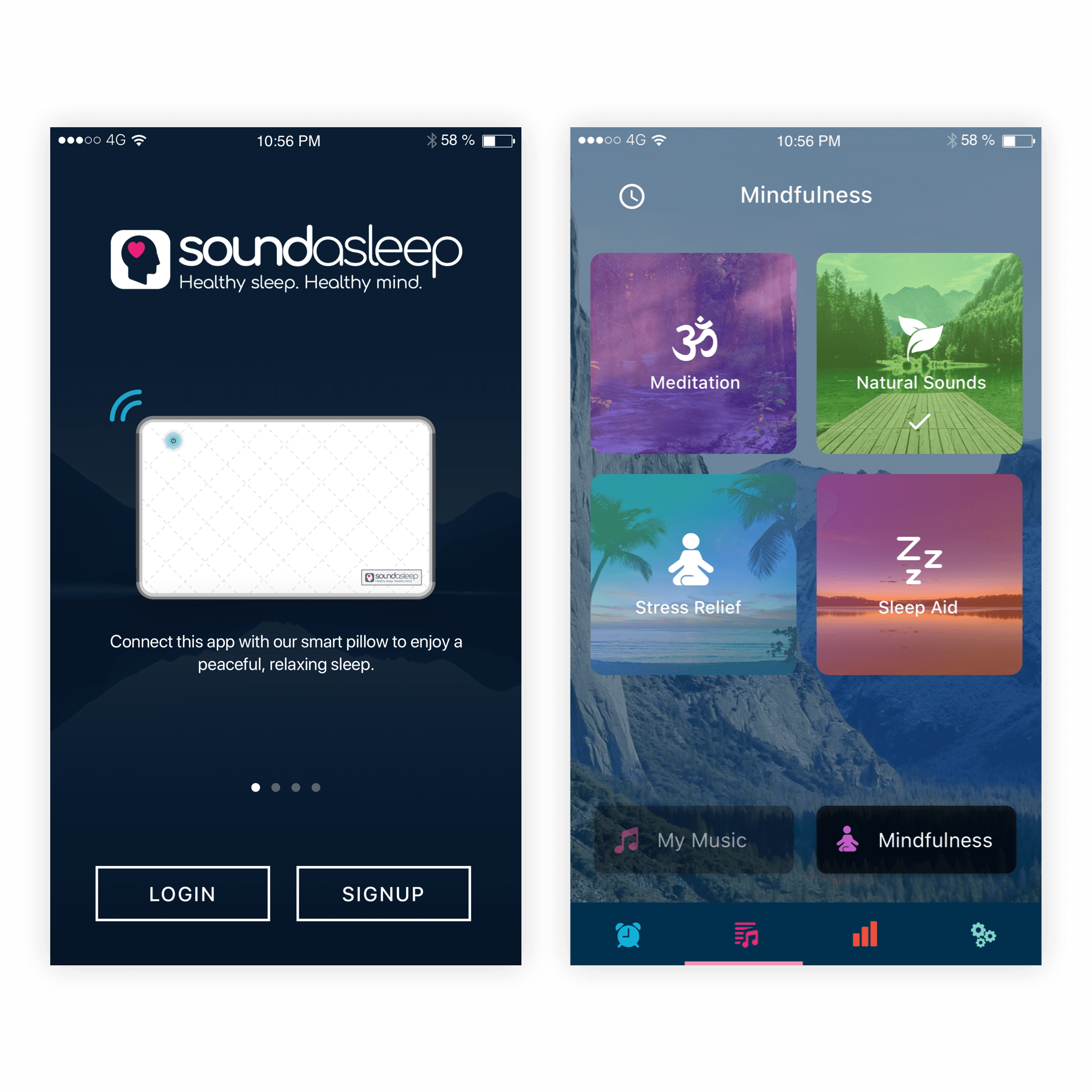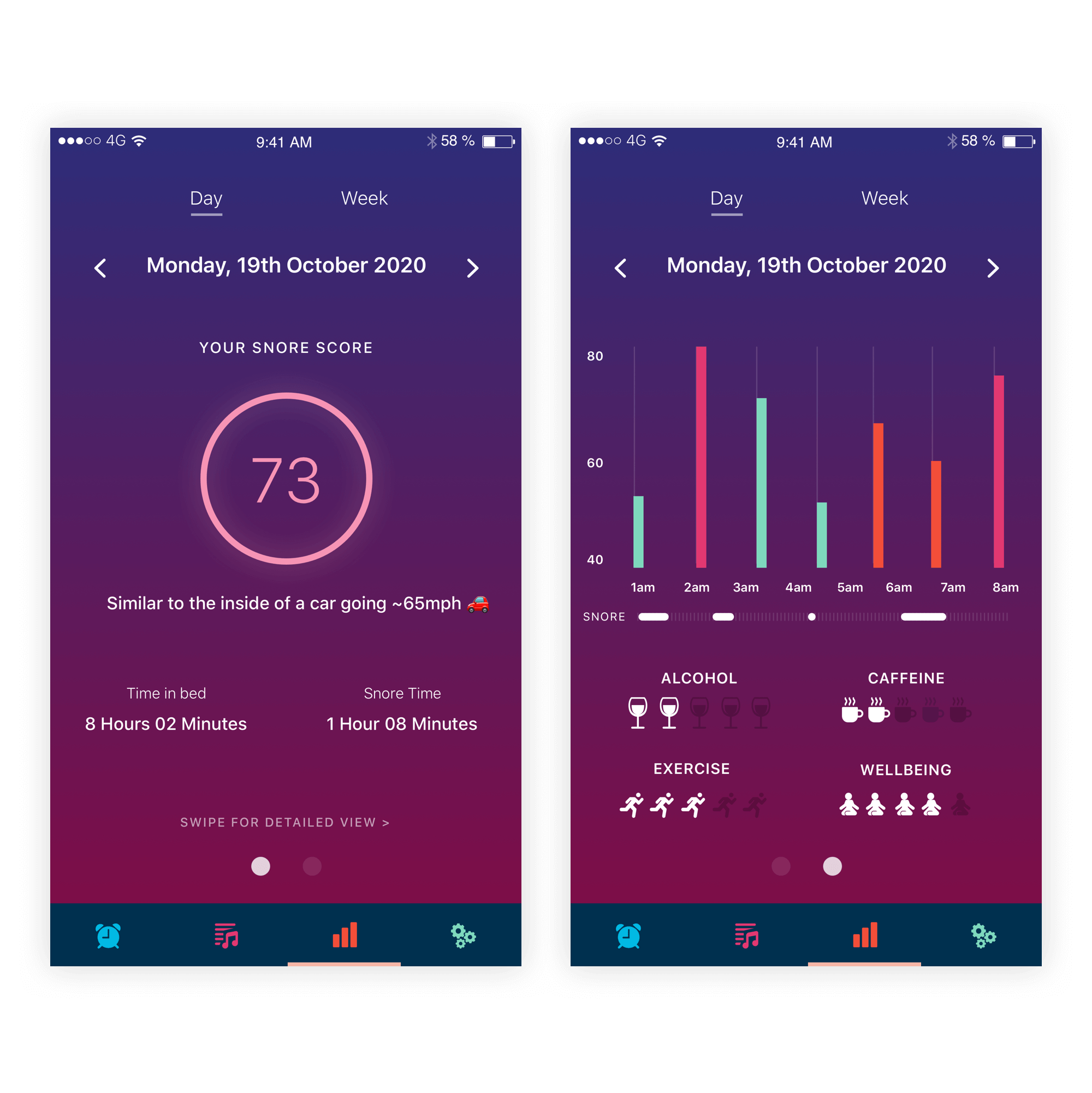UX/UI Design for Sound Asleep - A sleep monitoring app that pairs with one of the world's first smart pillows.
In an increasingly connected world, we rely on our phones to help us learn more about our personal health – including how we can sleep better.
Sound Asleep was designed with this in mind. Using the built in microphone on a smartphone, the app will detect the moments in the night that are the loudest, and play gentle music to mitigate distracting ambient noises. As a result, getting back to a deep sleep becomes easier.

Taking on every aspect of the UX discovery and design, I researched current sleep monitors and alarm apps to understand more about how they are designed, and why they are effective for the user.
When we’re sleeping in a poorly lit room, a bright flashing screen can be dazzling and can interrupt our natural sleeping pattern. I designed the app with this in mind, using a darker colour palette and relaxing imagery throughout.

On first thought, it’s a novel idea. But when we realise that the average person spends around 26 years asleep in their lifetime (usually on a pillow), it makes perfect sense to invest in improving our sleep health.
The Sound Asleep pillow has a built in bluetooth speaker, which pairs with your phone. This, combined with the ambient sound library I designed into the app, is a more comfortable way to get to sleep, and sleep longer.
I tested the app… and can confirm!

We had lots of ideas, but had to work with a limited scope for a minimum viable product. We focused on two data points – time spent asleep and ambient noise levels.
The app also asks users questions about their day before bed – how much alcohol, caffeine, exercise they had and their general stress levels.
The result gives users unique insights into their night sleep, highlighting correlations between their intake and stress compared to their sleep quality.
